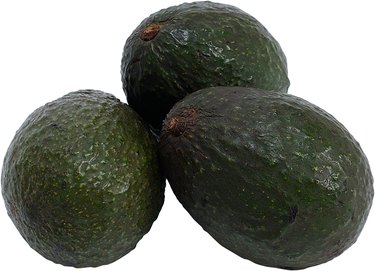
Avocado trees are large and tropical, with specific needs for warm sun, frost-free environments and quick drainage. These trees also maintain somewhat complicated blooming habits, with two different types of pollination schedules. Type A avocados produce flowers that receive pollen in the morning and release pollen the following afternoon, while Type B avocado types receive pollen in the afternoon and release the next morning. Large-scale growers combat this problem with multiple plantings of both avocado varieties for natural pollination. If you only have one avocado tree, though, help nature along with careful hand pollination.
Step 1
Determine what sort of avocado tree you have for best pollination. For Type A avocados work in the morning when the tree's blooms are receptive to pollen. For Type B avocados, work in the afternoon. If you don't know what type of avocado tree you have, work in both morning and afternoon sessions.
Video of the Day
Step 2
Rub clean cotton swabs over the anthers in the flowers to gather pollen. Gather pollen from several blooms at once.
Step 3
Rub the cotton swabs over the sticky pistil and stigma at the center of each bloom to transfer the pollen. This pollen transfer sends a chemical message to the bloom to produce fruit.
Step 4
Repeat the process every morning or afternoon through the season to pollinate as many blooms as possible for the best possible harvest.
Tip
Increase natural pollination on the avocado with ladybugs, wasps, moths and bees.
Each cluster of avocado bloom contains 200 to 300 flowers. The clusters produce 2 to 3 avocado fruits with natural pollination.
Video of the Day